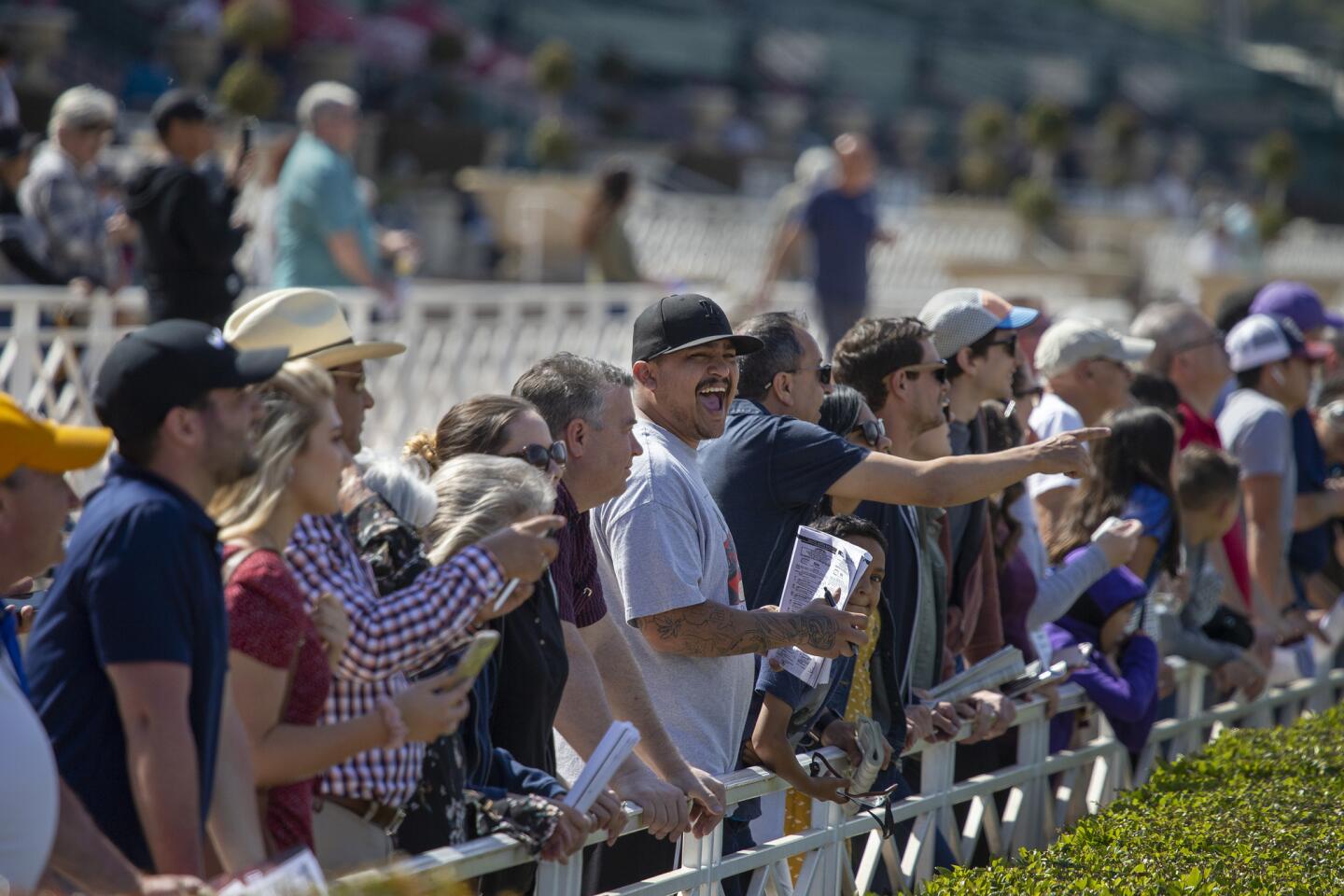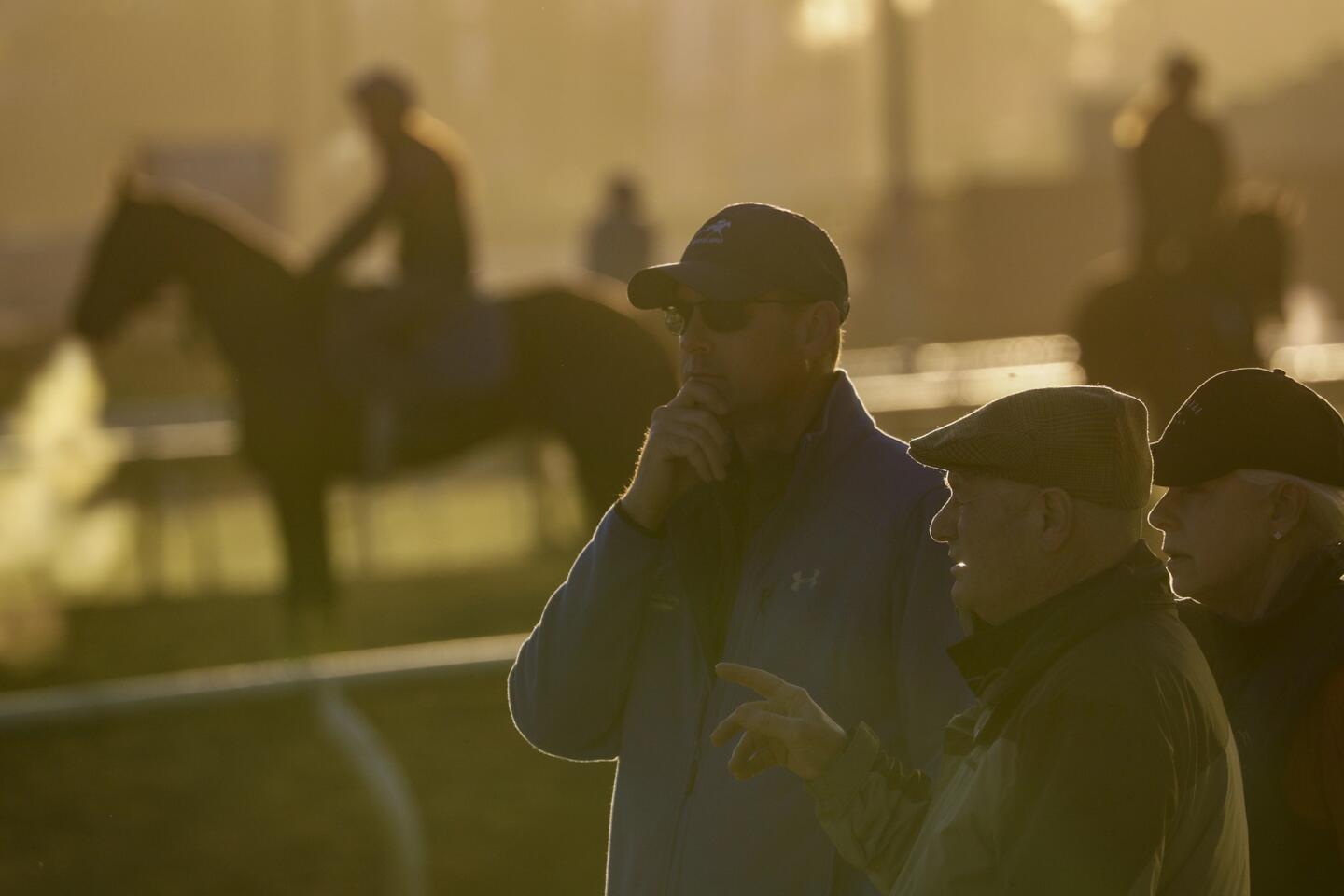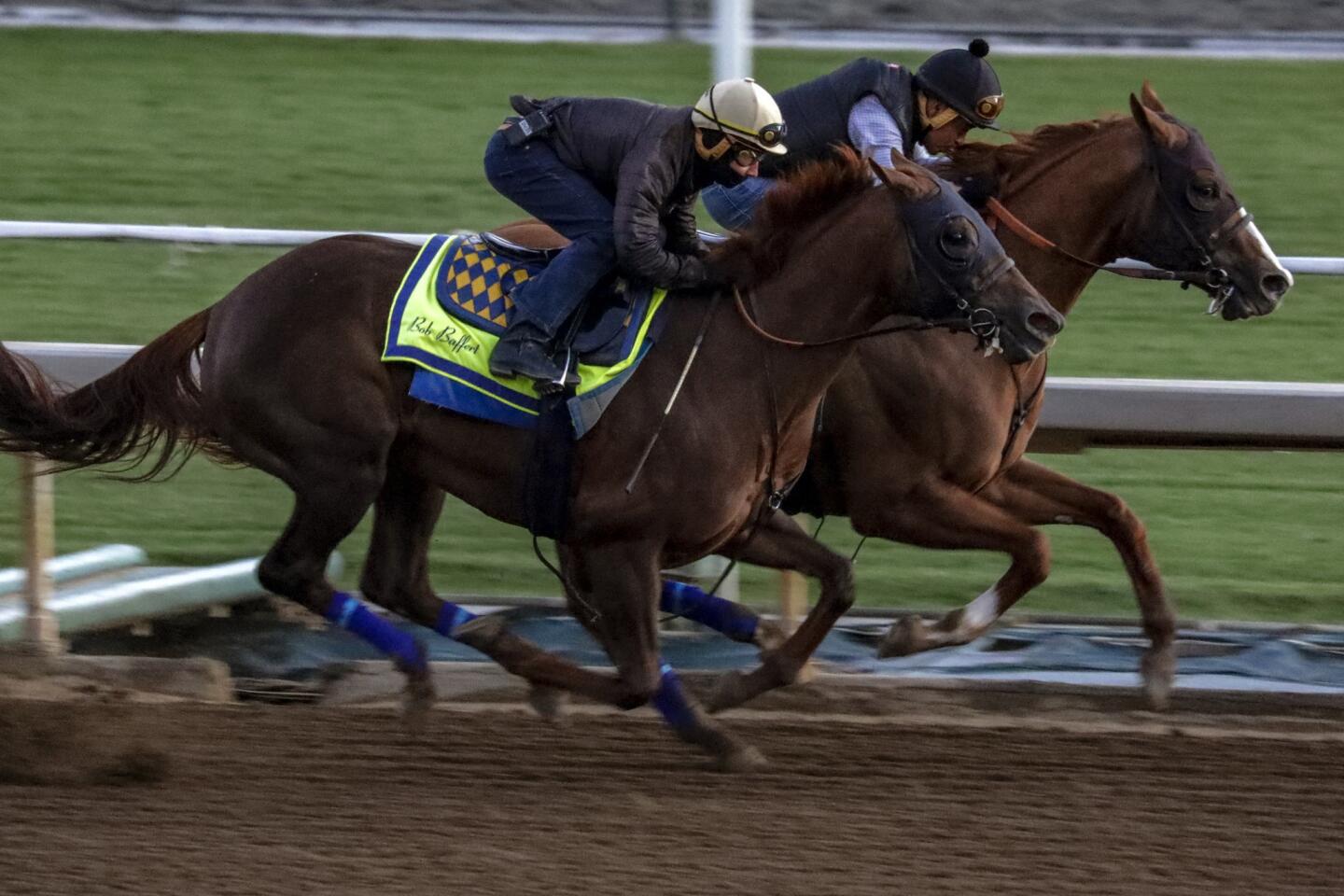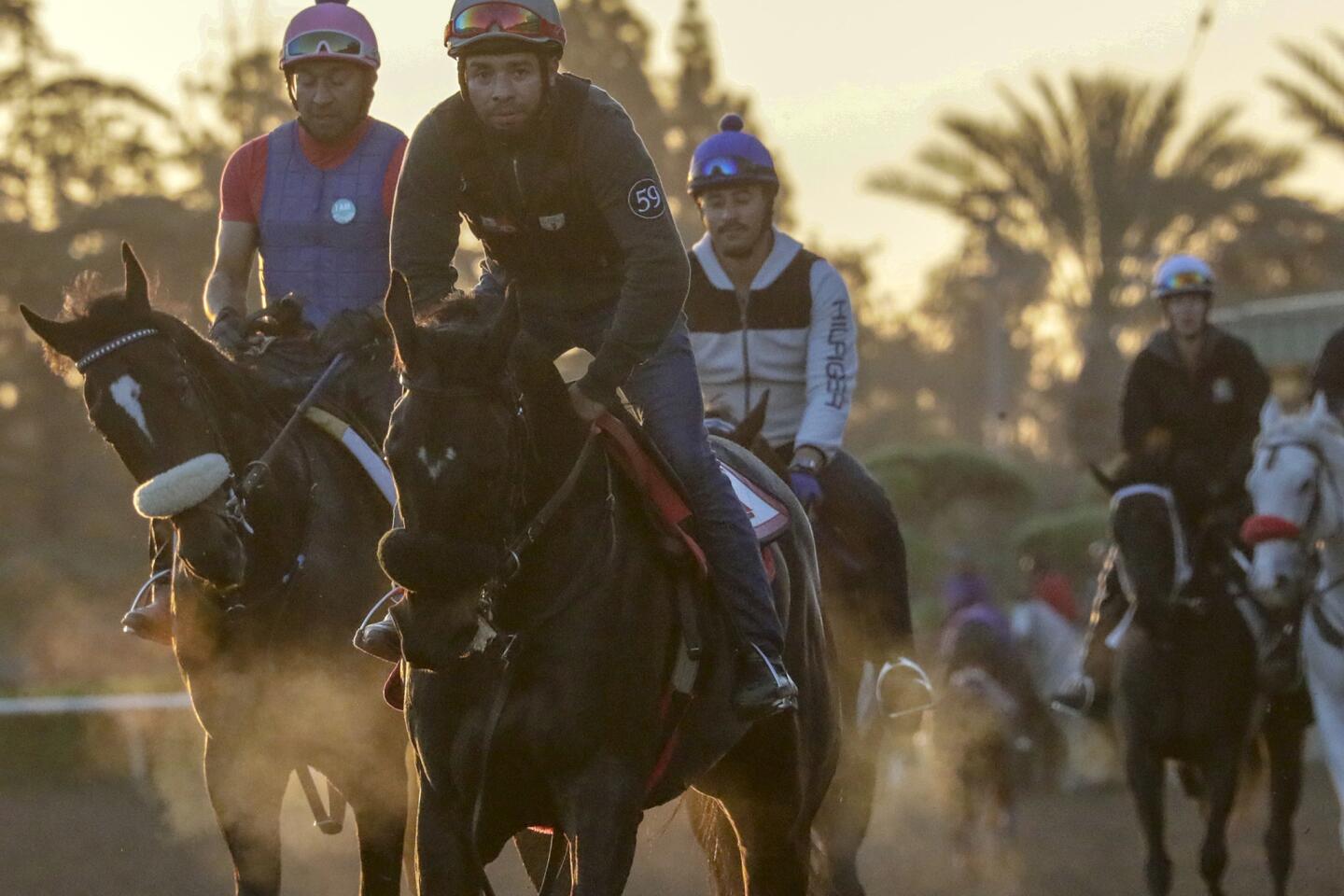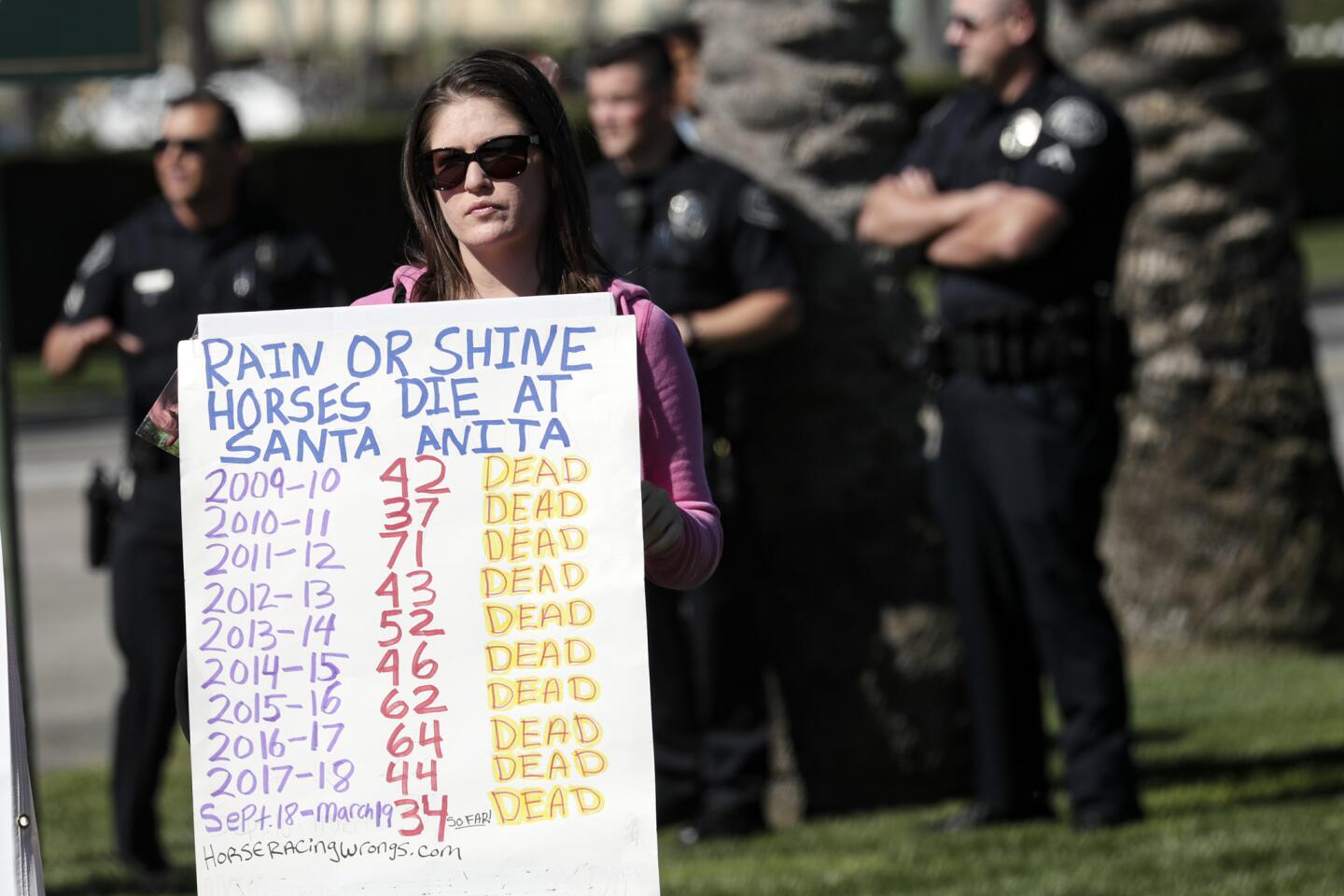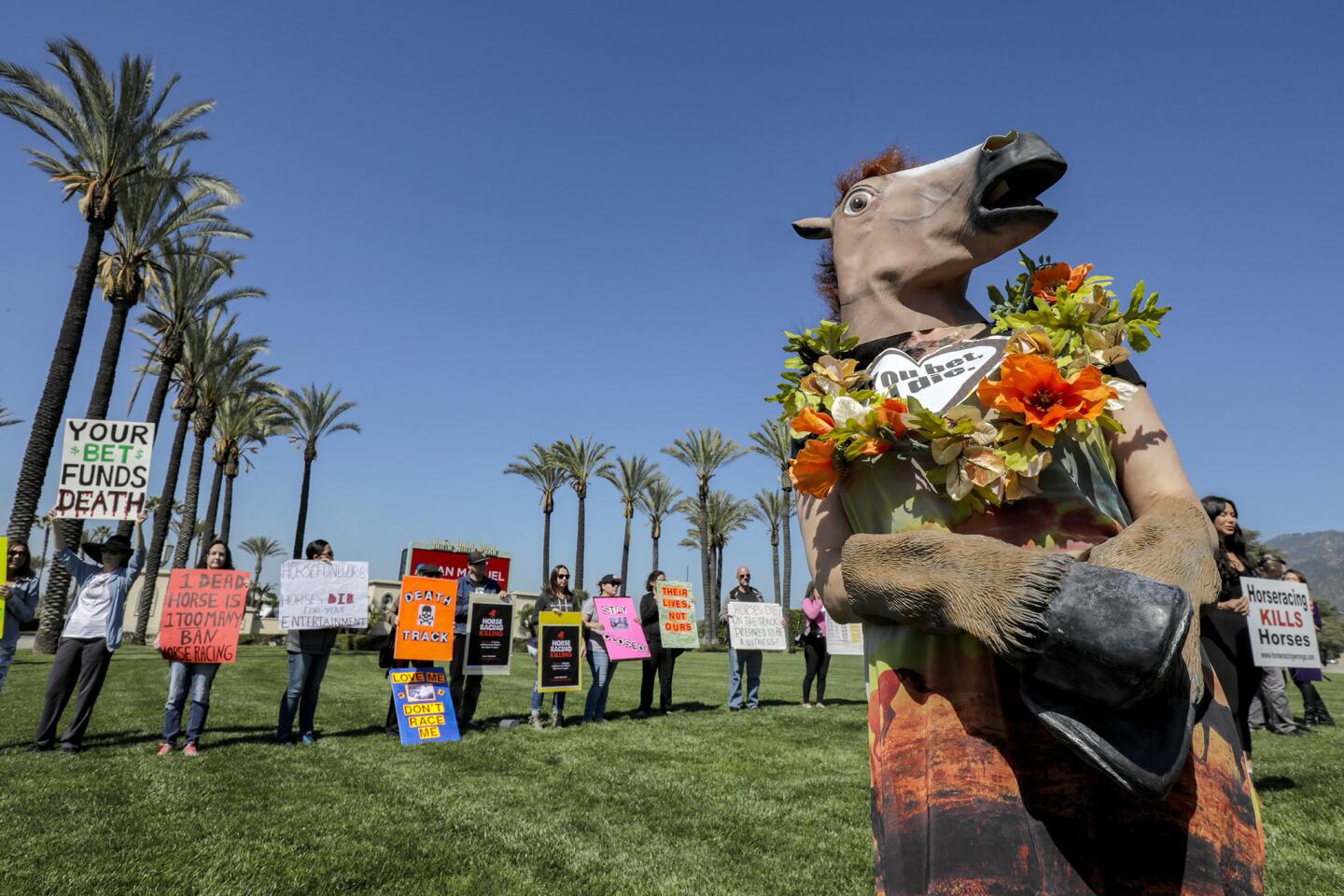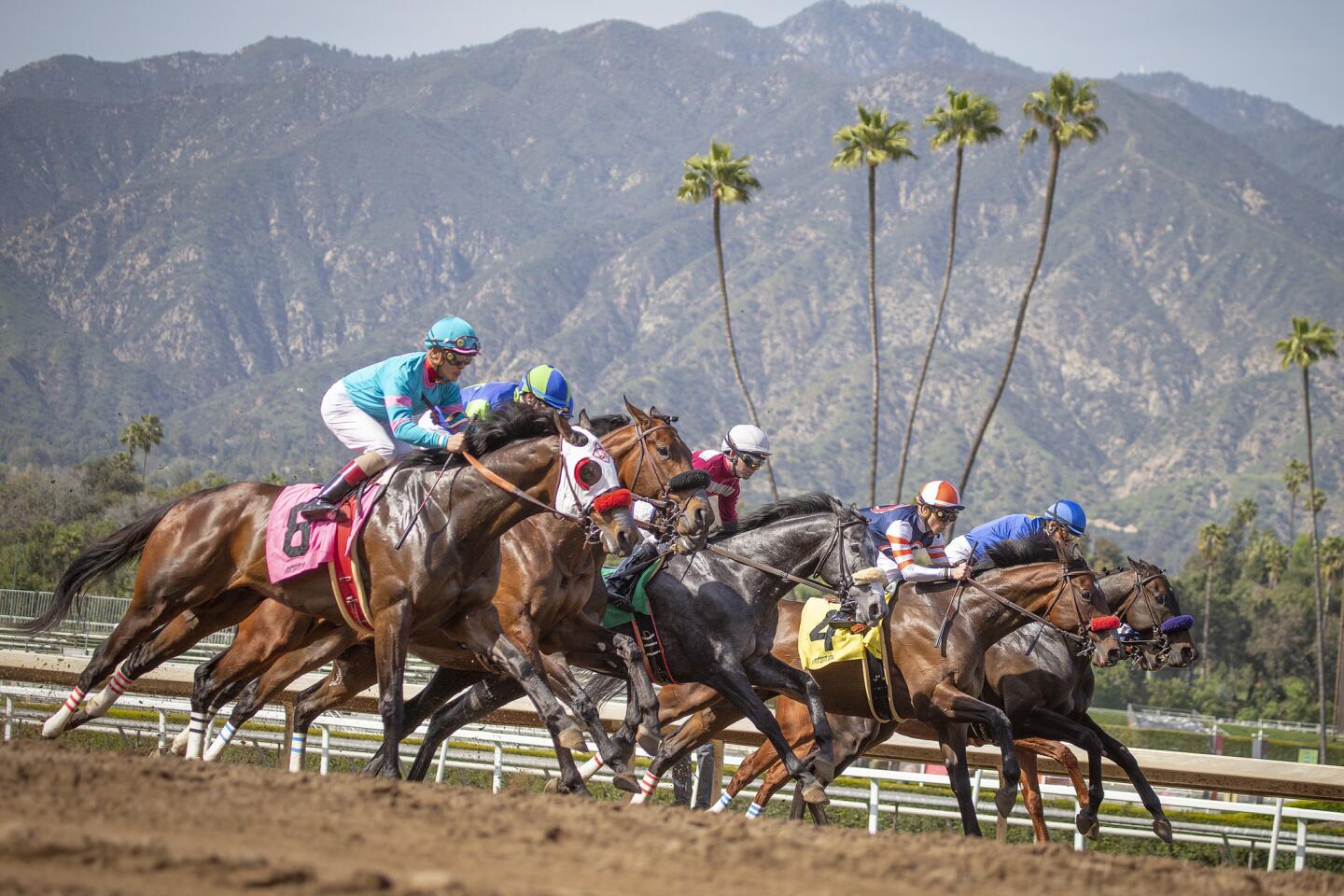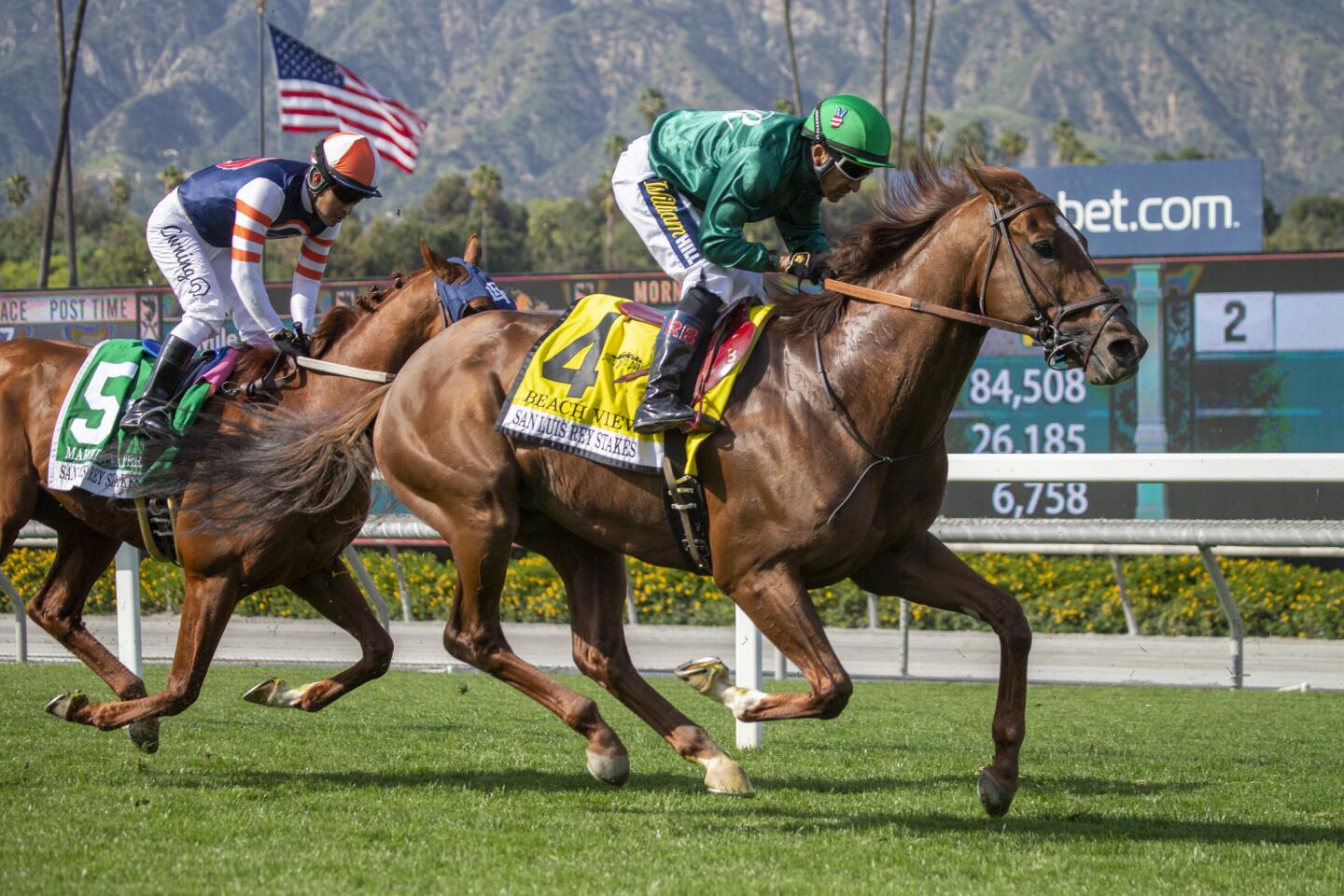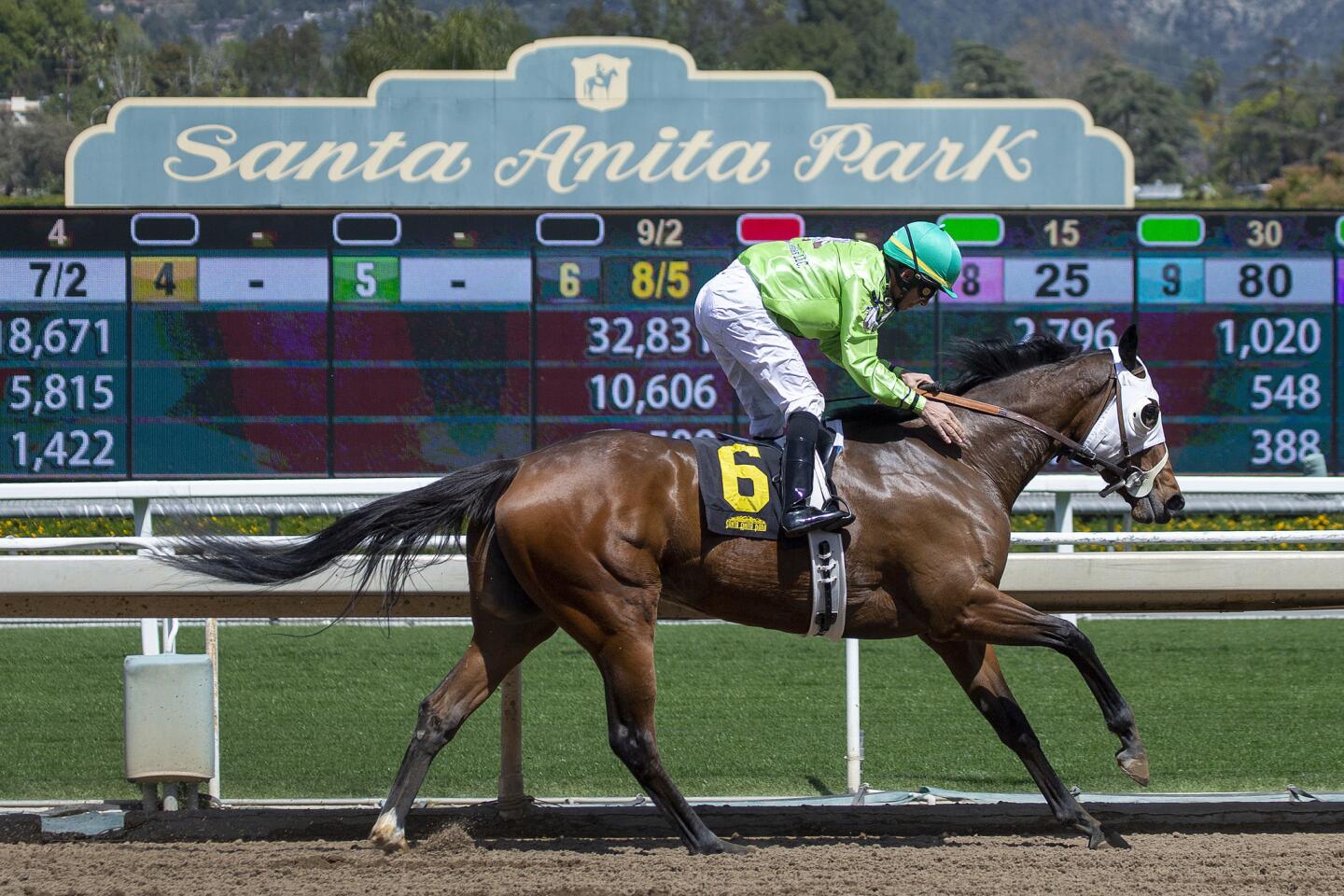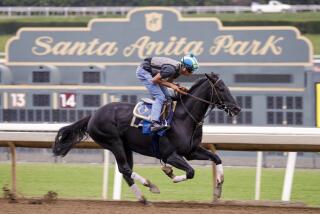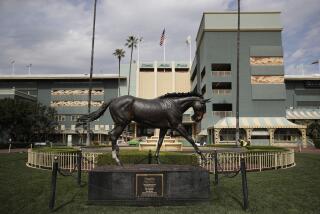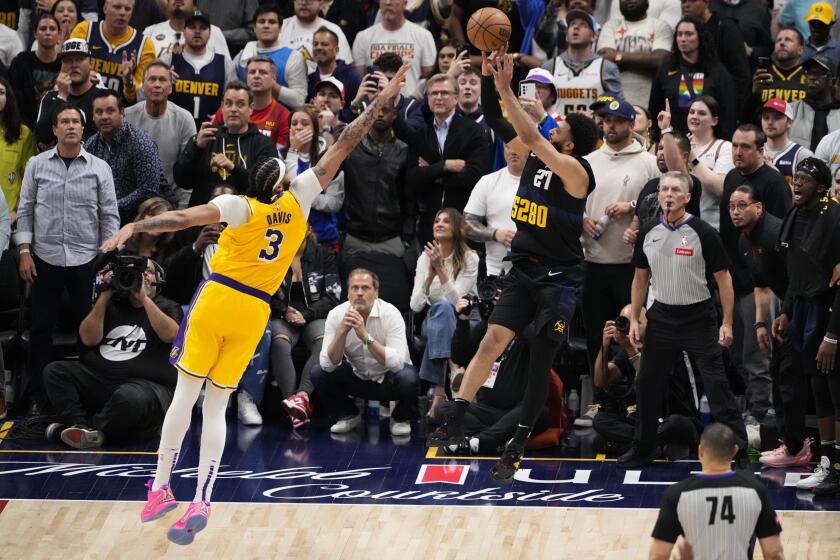Santa Anita to reopen Friday after horse deaths lead to limits on whip use and race-day medications
Santa Anita Park reopens Friday after nearly a month without racing, having closed to investigate the deaths of 22 horses in a little more than two months. But racing resumes under scrutiny, the California Horse Racing Board on Thursday taking the first steps to abolish the use of the whip and race-day medications.
The CHRB passed a rule that would restrict jockeys from using a riding crop — often called the whip — except in cases when the safety of jockeys or horses is in question.
For the record:
2:10 p.m. March 28, 2019Clarification: An earlier version of this story may have implied there was a complete ban on using the whip.
Also at Santa Anita and Golden Gate, Friday ushers in the eventual elimination of race-day medication, including Lasix, a drug given to horses to aid breathing.
On Thursday, horses could be given 10cc of the drug on race days. On Friday it drops to 5cc and next year all 2-year-olds will be prohibited from race-day medication. Only the U.S. and Canada allow race-day medication.
There is a 45-day public notice period, and a second vote, before it becomes official throughout the state.
The ruling on the whip was a surprise to the Jockeys’ Guild, which was working on a compromise agreement that would have allowed limited use.
Representatives of the Guild had asked that the vote be delayed because it believed there hadn’t been enough time to research the topic and present scientific evidence. They also said the materials submitted to the board for the meeting were inadequate. Jockeys contend that the new cushioned riding crop is more about making noise and focusing a horse than forcing them to run harder.
This brought a strong rebuke from Madeline Auerbach, vice-chair of the CHRB.
“You are quite mistaken,” Auerbach said. “We have done our due diligence.”
She also contradicted the premise that the riding crop played no role in the death of any of the horses.
“I was standing by the side of the track when one of those unfortunate things happened,” Auerbach said. “And I was watching someone who was not as skilled as they should be … going after a horse with the whip when it was obvious that the horse in question had nothing else to give is something that I never want to see again.”
Belinda Stronach, chief executive of The Stronach Group — which owns the track — also spoke on behalf of banning the use of the whip.
She read excerpts from a letter from Jerry Bailey, a retired Hall of Fame jockey. In the letter, Bailey explained why he has changed his view on use of the whip through the years and — while saying he did not believe it played a role in any of the deaths — felt its use should stop.
Sign up for our horse racing newsletter »
The vote to abolish use of the whip by the board was unanimous. The board did amend an earlier proposal that if a jockey uses the whip, the horse could be disqualified. Instead, the jockey could be stripped of purse money, fined and suspended.
Joe Harper, chief executive at Del Mar, said the anxiety level has escalated at Santa Anita and throughout racing.
“It’s pretty high.” Harper said. “Are there going to be any more fatalities at Santa Anita? The odds tell you yes. But, if the death rate stays low, they are going to run their meet and hopefully the other tracks can follow suit and keep the injuries down low. That’s very important now.”
Alan Balch, executive director of the California Thoroughbred Trainers, echoed the importance of safe racing at Santa Anita this weekend and beyond.
“Santa Anita is at the pinnacle of the world’s race tracks and certainly there is going be tremendous attention,” Balch said. “We’re going to have to treat every horse that goes out to gallop, exercise or race like they are in the Kentucky Derby because all the eyes are on them.
“The racing office has to be that way. The horsemen have to be that way. The veterinarians have to be that way, and we are going to take every conceivable precaution to see to it that the track is safe.”
More to Read
Get our high school sports newsletter
Prep Rally is devoted to the SoCal high school sports experience, bringing you scores, stories and a behind-the-scenes look at what makes prep sports so popular.
You may occasionally receive promotional content from the Los Angeles Times.


